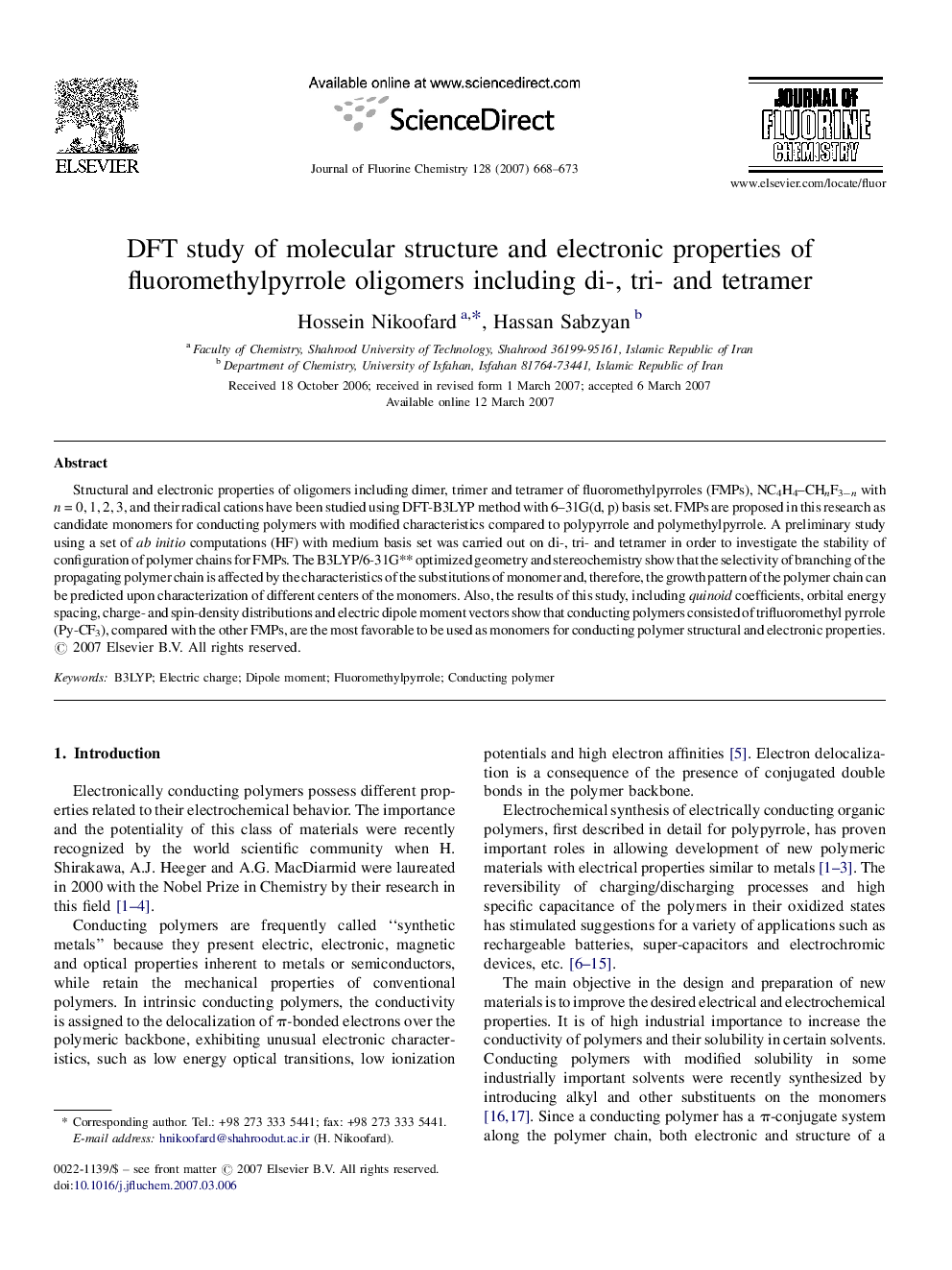| Article ID | Journal | Published Year | Pages | File Type |
|---|---|---|---|---|
| 1315000 | Journal of Fluorine Chemistry | 2007 | 6 Pages |
Structural and electronic properties of oligomers including dimer, trimer and tetramer of fluoromethylpyrroles (FMPs), NC4H4–CHnF3−n with n = 0, 1, 2, 3, and their radical cations have been studied using DFT-B3LYP method with 6–31G(d, p) basis set. FMPs are proposed in this research as candidate monomers for conducting polymers with modified characteristics compared to polypyrrole and polymethylpyrrole. A preliminary study using a set of ab initio computations (HF) with medium basis set was carried out on di-, tri- and tetramer in order to investigate the stability of configuration of polymer chains for FMPs. The B3LYP/6-31G** optimized geometry and stereochemistry show that the selectivity of branching of the propagating polymer chain is affected by the characteristics of the substitutions of monomer and, therefore, the growth pattern of the polymer chain can be predicted upon characterization of different centers of the monomers. Also, the results of this study, including quinoid coefficients, orbital energy spacing, charge- and spin-density distributions and electric dipole moment vectors show that conducting polymers consisted of trifluoromethyl pyrrole (Py-CF3), compared with the other FMPs, are the most favorable to be used as monomers for conducting polymer structural and electronic properties.
Graphical abstractStructural and electronic properties of fluoromethylpyrroles (FMPs), NC4H4–CHnF3− with n = 0, 1, 2, 3, oligomers including dimer, trimer and tetramer and their radical cations have been studied using DFT-B3LYP method with 6–31G(d, p) basis set. Structure scheme used for FMP tetramers where –CX3 stands for –CH3, –CH2F, –CHF2 and –CF3.Figure optionsDownload full-size imageDownload as PowerPoint slide
